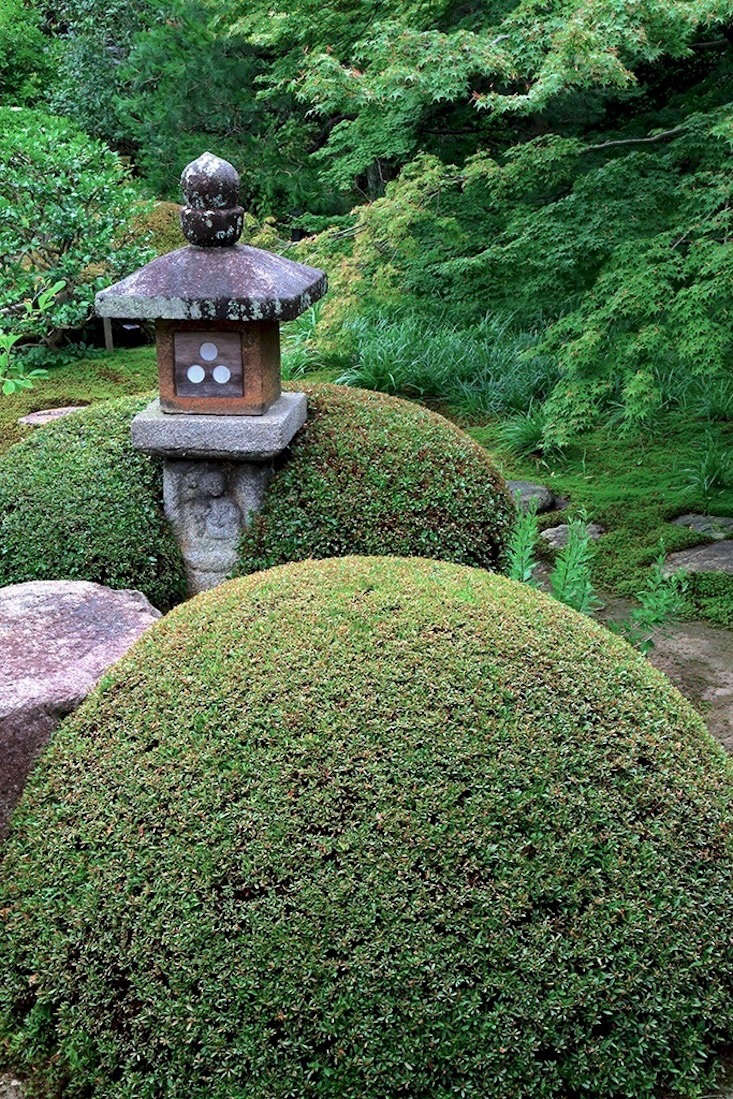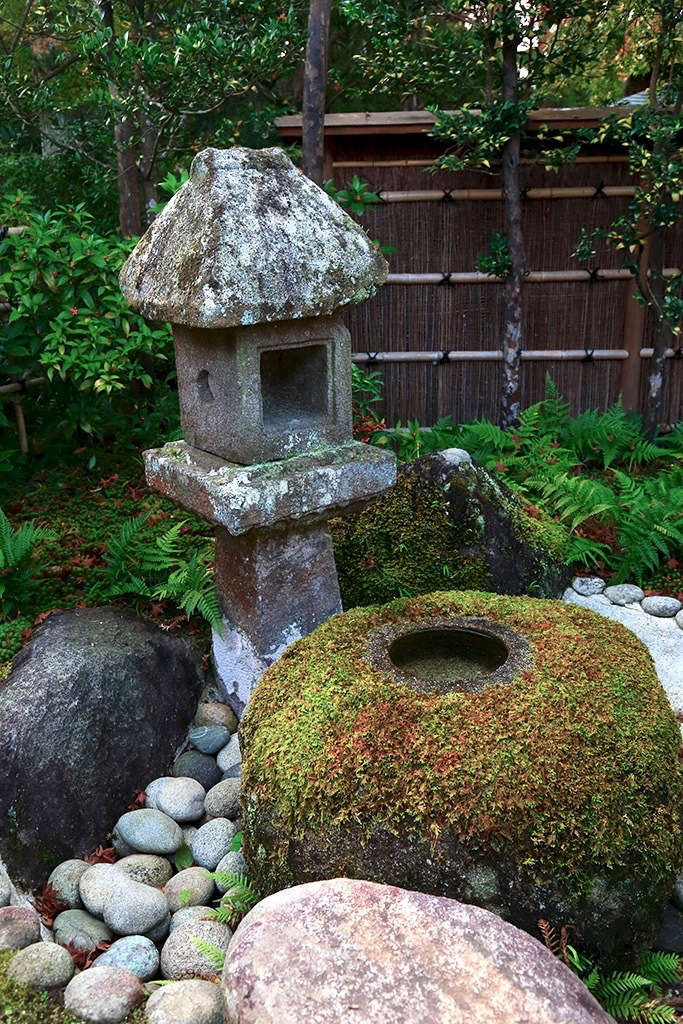Maybe you love the look of a Japanese garden, but you’re thinking, “I already have a garden. How can I make what I have look more Japanese without starting from scratch?”
Fear not. We have some great advice from landscape architect Marc Peter Keane, an expert on Japanese gardens who’s written six books on the subject. American-born, Keane lived in Japan for 20 years and goes back regularly to visit family with his Japanese wife. He now lives in upstate New York and designs Japanese gardens around the US.
The photos shown here, taken by Keane in historical gardens around Japan, appear in his latest book, Japanese Garden Notes: A Visual Guide to Elements and Design, published by Stone Bridge Press. Read on to hear his ideas for creating the Japanese look at home.
Photography by Marc Peter Keane.
1. Create open spaces.

“Japanese garden design is a process of distillation,” says Keane, explaining that what’s left out is as important as what is put in—if not more so. “Open space, or ma in Japanese, creates the sense of balance that has both movement and stillness. Resist the temptation to fill in every last corner of the garden.”
When you think about it, much Japanese design incorporates open or empty space—you see it not only in gardens but also in paintings and flower arrangements. Being unfinished isn’t a bad thing.
Be aware of this in your garden: When you don’t stuff every corner, individual elements have a chance to shine. Make your garden look more Japanese by taking things out.
2. Simplify the color palette.

“If you had to pick one color that’s essential to a Japanese garden, it would be green,” says Keane. Layers of green in subtle varieties create a feeling of calm.
“Westerners are so focused on their perennial borders and the layering of multiple colors,” he says. “In Japan, if there’s any sort of bright color, it’s one plant at a time. When the plum is in flower, that’s the only thing in flower. It’s the same for the azaleas and the iris. It’s very singular and it’s brief—gone within a week.”
3. Prune with purpose.

The practice is done most effectively with Satsuki azalea—a small-leafed variety common in Japan (and available in the US, though not hardy enough for all growing areas). “If it’s done properly, the pruning creates mounded forms that rise and fall in the hummocks and valleys,” Keane says. “When the plants come up against a stone or a garden lantern, they wrap around it and seem to embrace it.”
Boxwood and small-leafed yew also respond to this type of pruning. “You want something with fine branches for an even cover of green leaves,” Keane says, adding that people sometimes mass in perennials such as chrysanthemums to make these tightly mounded forms.
When asked about cloud pruning, Keane admits that he’s not a fan. “I find it stiff and unnatural, like topiary,” he says. “In Kyoto, the old imperial city where things are done in the most refined manner, trees are never pruned that way.”
4. Frame the view.

“Think of the garden view seen from a nearby room as if it’s a painting,” Keane says. This advice is best heeded when you’re in the design stage, but you can also keep it in mind as you add plantings or make other changes. “The trick is to compose the garden in such a way that when it’s seen through the frame of a window or doorway, it’s artfully balanced.”
5. Preserve the patina.

“Moss on a water basin and lichen on a stone lantern are a precious gift that only time can grant,” Keane says. He’s found that many Westerners constantly scrub to keep things looking like new. “Don’t think of something that looks old as being shabby,” he says. “In Japan the patina of age is one of the most prized aesthetic additions to a garden.”
Note: This doesn’t let you off the hook for all garden maintenance. If a wooden deck becomes slippery and dangerous, or a gate won’t open, you’ll need to step in. But if weathering doesn’t cause a functional problem, it is a very good thing.
6. Pave with stone.

Put natural stone pavers underfoot. “Stepping-stones have two effects on the design of a garden,” Keane says. “When chosen for their size and color, they’re like dabs of paint across the canvas of the garden. But they also act to control the speed with which someone moves through the garden, making the experience slower and more contemplative.”
To make your own natural garden path, look on riversides, in the forest, or by the ocean for stones with the right kind of shape. Cut flagstones just won’t cut it.
7. Use gates as thresholds.

Many Japanese gardens have gates that aren’t intended as physical barriers. “They’re simply to heighten the sense of threshold, of passing from one place to another,” Keane says. A gate can give visitors a sense of discovery, and will make a garden feel bigger by dividing it.
If you’re lucky enough to have a sprawling garden, try installing a gate (or several) to break up the space into smaller sections. A gate doesn’t have to be Japanese-style, but if you want that you can find sources online, or look for a carpenter trained in Japanese techniques to get one custom-built.
8. Draw lines in the sand.

If you’re moving toward minimalism in a garden, consider dedicating a space to a dry garden with no plants at all. “You can use a rake to create patterns in the sand, and change the patterns from time to time to make the garden feel new,” says Keane. While any kind of gravel will work, decomposed granite is best for getting those sharply raked lines. Japanese gardeners call it shirakawa-suna, a crushed granite with grains that are a mix of white, gray, and black, and range in size from coarse sand to fine gravel.
Note that these gardens aren’t meant for strolling—they’re considered viewing gardens, and usually placed in a spot where people in a nearby room or veranda can gaze out at it as if it’s a sculpture or painting.
As for the raking, no special technique is required. And while there are many traditional patterns, most are meant to replicate the look of waves rippling on water.
Don’t think that a dry garden means no maintenance. “Those famous gardens in Kyoto look perfect because they’re cleaned and raked every day,” says Keane. You won’t have to be that diligent, but you’ll still have to rake periodically and remove debris. If you use the right gravel, the pattern won’t be erased by a heavy rainfall.
9. Be bold with boulders.

The large ornamental stones in Japanese gardens are viewed with the same artistic eye that a sculpture would be. The shape, texture, and color are all intentionally chosen to enhance the garden’s overall design. “Before placing a boulder, you pick its top and its best side—in Japanese that’s called the face,” Keane says. “Then you place the boulder with the top up and the face pointing in the direction where it will be best seen, whether toward a room that looks onto the garden, or a path that passes nearby.”
10. Add a water feature.

Traditionally, garden water basins were intended as a place for patrons to clean up before entering a tea room. Today they’re mostly used as decoration, but Keane points out that they still lend a sense of purity. “They’re placed by a path at the point where you enter or leave the garden, and they’re either made of natural stone or carved granite.”
At one time, the basins were filled by pouring in water by hand. Today you can add the musical sound of running water to your garden by installing a basin with a recirculating pump and a bamboo spout so water can splash into the bowl. As an added benefit, the birds might flit by for a drink or a bath.
For more ideas:

See more ideas for adding Japanese-garden design elements to a landscape:
- Camellias 101: A Field Guide to Planting, Care, and Design.
- Designer Visit: A Garden Inspired by Japan, in Westchester County, New York.
- Hardscaping 101: Decomposed Granite.
- See plants for a Japanese-style garden in our curated guide Shrubs 101, where we cover Azaleas, Forsythias, Boxwoods, and more.
- Designer Visit: A Gray and Green Garden at Tiger Glen.












Have a Question or Comment About This Post?
Join the conversation (1)